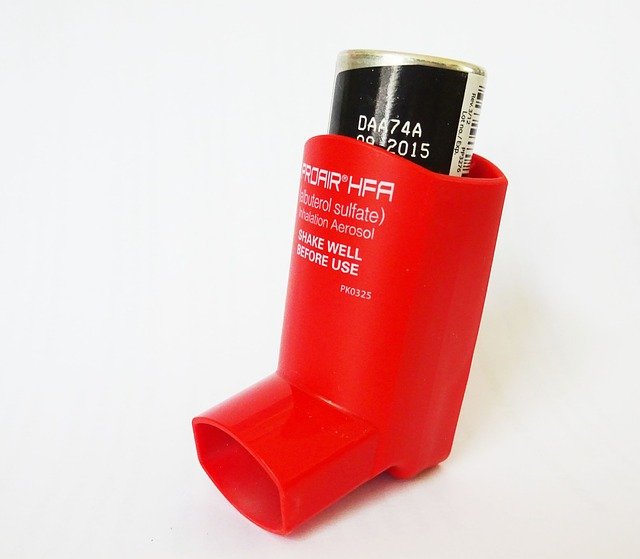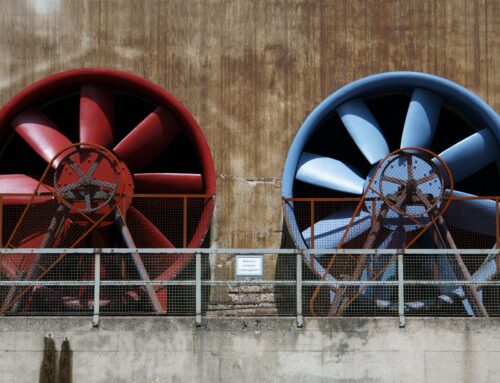Pregnancy, What Expectant Mothers Should Know About Indoor Air Pollution
Pregnancy is a period of development for many expectant parents, and many of them use it to further their education. In today’s world, pregnancy tools abound in the form of books, blogs, videos, and in-person courses. And one of the most often asked pregnancy safety questions is, “What should I stop when I’m pregnant?”
Smoking, drinking, and taking some medicines are commonly at the top of the list. Soft cheeses, deli foods, and mercury-rich seafood are among the other culprits. But what about airborne contaminants?
Ozone, particulate matter, nitrogen dioxide, sulfur dioxide, and carbon monoxide are all examples of common outdoor air contaminants, according to the American Lung Association. Toxic air pollution may come from a variety of sources, including burning fuels, vehicle exhaust, building emissions, and others. However, the majority of people spend 90% of their time indoors.
Pregnancy is a good time to think about your home’s heating, ventilating, and air-conditioning (HVAC) system, as recent research has shown that air pollution can have a direct effect on mothers and infants. Humidifiers and air purifiers can help with indoor air quality, but they won’t help if the source of your air, your HVAC machine, isn’t clean.
One thing is certain: clean air is best for everyone, particularly pregnant mothers and newborns, regardless of how you heat and cool your house.
WHAT IMPACTS PREGNANCY ON AIR QUALITY?
Bad air quality has been linked to negative health effects in studies. Some affect pregnant women, while others affect babies and even older children.
Birth weight is low
A full-term baby normally weights between six and nine pounds after a normal, stable pregnancy. The term “low birth weight” refers to a baby weighing less than 2,500 grams, or five pounds and eight ounces. According to the Centers for Disease Control and Prevention, about 8% of babies in the United States are born with a low birth weight.
The impacts of air quality on birth weight have been recorded in several studies. A research done in Los Angeles looked at the obstetric history of non-smoking women who gave birth. Babies born to mothers who lived in more contaminated areas weighed 314 grams (0.69 pounds) less on average than babies born to mothers who lived in less polluted areas.
Early Birth
Premature birth is where a baby is born too soon. Preterm babies are at risk for developmental abnormalities and lifelong physical defects, as well as respiratory complications, heart issues, an inability to regulate body temperature, an immature nervous tract, and retinopathy, if delivered within the 37th week of pregnancy. Premature birth can occur for a variety of causes, one of which is air pollution.
Preterm birth has been linked to air pollution in many studies. “In 2010, about 2.7 million preterm births globally — or 18 percent of all preterm births — were correlated with outdoor exposure to fine particulate matter,” according to a study conducted by the Stockholm Environment Institute (SEI) at the University of York. A Swedish study published in 2013 found a connection between ozone exposure in the first trimester and the risk of preterm birth, whereas a National Institutes of Health study found that air pollution exposure during a second pregnancy could increase the risk of preterm birth.
ASD (autism spectrum disorder)
According to a Harvard School of Public Health report published in 2014, expectant mothers who are exposed to high levels of fine particulate matter during the third trimester have twice the chance of raising a child with autism spectrum disorder (ASD) than pregnant women who live in areas with low particulate matter. The data was collected during all three trimesters of pregnancy, but the “only statistically relevant association” between fine particulate matter and autism spectrum disorder was found during the third trimester, according to the researchers.
The research tracked women from 14 states throughout the United States’ continental territory. It also took into account factors like population density, elevation, and distance from freeways as well as other particulate sources like power plants and waste combustors.
Asthma
As long as asthma is well managed in pregnant women, the disease poses no serious risk to the mother or the unborn child. High blood pressure, pre-eclampsia, and premature birth can all result from uncontrolled asthma during pregnancy. Air pollution can aggravate asthma symptoms, regardless of how well a person’s asthma is managed.
Furthermore, new research suggests that exposure to air pollution during pregnancy could increase the risk of the baby developing asthma later in life. In 2016, a study looked into the effect of traffic pollution in urban areas. “Children whose mothers lived near highways during pregnancy had a 25% increased relative risk of developing asthma before the age of five,” researchers discovered.
Fertility challenges and miscarriage
“Air pollution may pose a matter of concern for female infertility,” according to several reports, including a 2018 systematic analysis of literature. In fact, one study showed that when eight coal and oil-burning plants in northern California shut down, fine particulate matter and nitrogen oxide levels decreased, fertility rates increased.
Scientists have also spent a lot of time looking into the impact of poor air quality on miscarriage, which is referred to as “spontaneous pregnancy loss” by doctors. “Short-term exposure to elevated levels of air pollutants was associated with a higher risk of unintended pregnancy loss,” they concluded.
Risks and takeaways from other situations
Researchers have discovered correlations between increased gestational diabetes in expectant mothers, high blood pressure in infants, and delayed psychomotor growth when it comes to air pollution and pregnancy safety. However, it’s worth mentioning that most studies have only found associations between contaminated air and disease, rather than a straightforward cause-and-effect.
Although the study is convincing, keep in mind that scientists haven’t always been able to pinpoint which time cycle — week, month, or trimester — is most vulnerable to the dangers of air pollution. Furthermore, since the majority of studies have concentrated on outdoor air contaminants, more research is needed to fully comprehend the impact of poor indoor air quality on pregnancy.
AIR POLLUTION INDOORS VS. OUTDOORS
Outdoor air pollution, according to the EPA, can harm human health, harm the climate, and cause property damage. According to the EPA, “the air inside homes and other structures can be more seriously contaminated than the air outside in even the largest and most developed cities.”
What gives that this is possible? Inadequate ventilation is one of the causes. Scientists studying sick building syndrome discovered that in the 1970s, designers made buildings more airtight in order to increase energy efficiency. The occupants’ health was harmed as a result of the decreased ventilation. The American Society of Heating, Refrigeration, and Air-Conditioning Engineers has issued new requirements that call for a higher outdoor airflow rate.
What implications does this have for our homes, where we spend the bulk of our time? The majority of residential structures are designed to reduce the amount of outdoor air that enters and exits the building. According to the EPA’s resource “The Inside Story: A Guide to Indoor Air Quality,” contaminants can build up when not enough outdoor air reaches a home.
Infiltration, natural ventilation, and mechanical ventilation are the three methods by which outside air enters and exits a home. Outdoor air enters the house through joints, through windows and doors, and cracks in walls, floors, and ceilings, among other places. When air travels through opened windows and doors, it is called natural ventilation.
A fan that intermittently vents to the outside, removing air from one room, such as a bathroom or kitchen, is an example of mechanical ventilation. Fans and ductwork are used in a broader air handling system to collect indoor air and deliver filtered outdoor air in the house on a regular basis.
Indoor pollutant levels will rise when infiltration, natural ventilation, or mechanical ventilation are insufficient. The majority of the symptoms of poor indoor air quality are close to those of a cold or other respiratory virus. As a result, determining whether the symptoms are due to poor air quality or a mild illness can be difficult. If you have persistent respiratory symptoms, try to keep track of when and where they arise. If they disappear or diminish when you’re away from home and reappearance when you return, it’s possible that poor indoor air quality is to blame.
Indoor air quality and HVAC upkeep
Even if you don’t have any nagging respiratory symptoms, it’s critical to investigate the air quality in your home when it comes to pregnancy protection. Some health effects can take years to manifest after years of prolonged exposure to poor air quality, and they can be as severe as cardiovascular disease or cancer. Here are some practical measures to verify the air quality in your home:
Determine the causes of air pollution
Look for signs of poor ventilation. “Moisture condensation on windows or walls, smelly or stuffy air, filthy central heating and air-conditioning equipment, and places where books, shoes, or other objects become moldy,” according to the EPA. Some other possibilities can be a gas stove, some construction materials, and synthetic or treated upholstery are all possibilities.
You can also check your home for radon, a toxic gas that is colorless and odorless. Testing instruments are inexpensive, or you can employ a specialist to do it for you. Local and state health departments often employ experts who can assist in identifying and resolving indoor air quality issues.
Enhance ventilation
Increase the amount of outdoor air that enters your home to reduce the concentration of indoor air contaminants. When the weather permits, open windows and doors, run window or attic fans, and use a window air conditioner with the vent control open to increase ventilation. Another choice is to use bathroom or kitchen fans that exhaust outside, which will remove pollutants from the room while also increasing the rate of outdoor air ventilation.
It’s important to have good ventilation if you’re doing a temporary activity that might leak contaminants into your home. Painting, paint stripping, kerosene heating, welding, and sanding are some examples. Shift such things outside whenever possible.
Add or replace equipment
The EPA suggests changing the filter every 60-90 days if you have a conventional HVAC system or furnace. Make sure you have the right size; the filter should fit snugly so that air does not leak around it.
You may also want to invest in a portable air purifier for your home or a whole home air purifier. This is a separate device that removes gases or particles, including the most hazardous fine matter. Air cleaners come in a variety of shapes and sizes, and their effectiveness varies greatly. Most air cleaners just filter particulate matter or gases, so if you want to minimize both, you’ll probably need to buy two.
Switching to a heat pump is another option, which is dependent on environment, budget, and personal preference. An average heat pump will cost anywhere between $700 for a ductless mini-split system and $13,000 for a geothermal heat pump system. Heat pumps do not use combustion and therefore do not emit toxic gases, which is good for the environment.
OTHER BENEFITS OF HVAC SYSTEM MAINTENANCE
Pregnancy is normally a happy time for expectant parents as they look forward to welcoming a new baby into their lives. However, digesting new knowledge, budgeting for baby expenses, and planning your home for your baby’s arrival can be daunting.
Maintaining your HVAC system will give you peace of mind by preventing expensive breakdowns and repairs. The last thing you want during a stressful pregnancy is to come home to a home that is too hot or too cold. A well-maintained HVAC system ensures that the air you breathe is safe, protecting your baby from the dangers of bad air quality.
PREGNANCY SAFETY AND AIR QUALITY: HOW TO MAKE SENSE OF IT
Many expectant mothers will spend time scrutinizing ingredient lists and conducting online research to ensure that these items are safe for their developing child.
Breathing clean air, courtesy of a well-maintained HVAC system, is just as essential as eating nutritious foods and drinking plenty of water while pregnant. Your HVAC system is the source of your home’s ventilation, so it’s crucial to know how it’s doing both inside and out during pregnancy and when welcoming your new baby into the house.














